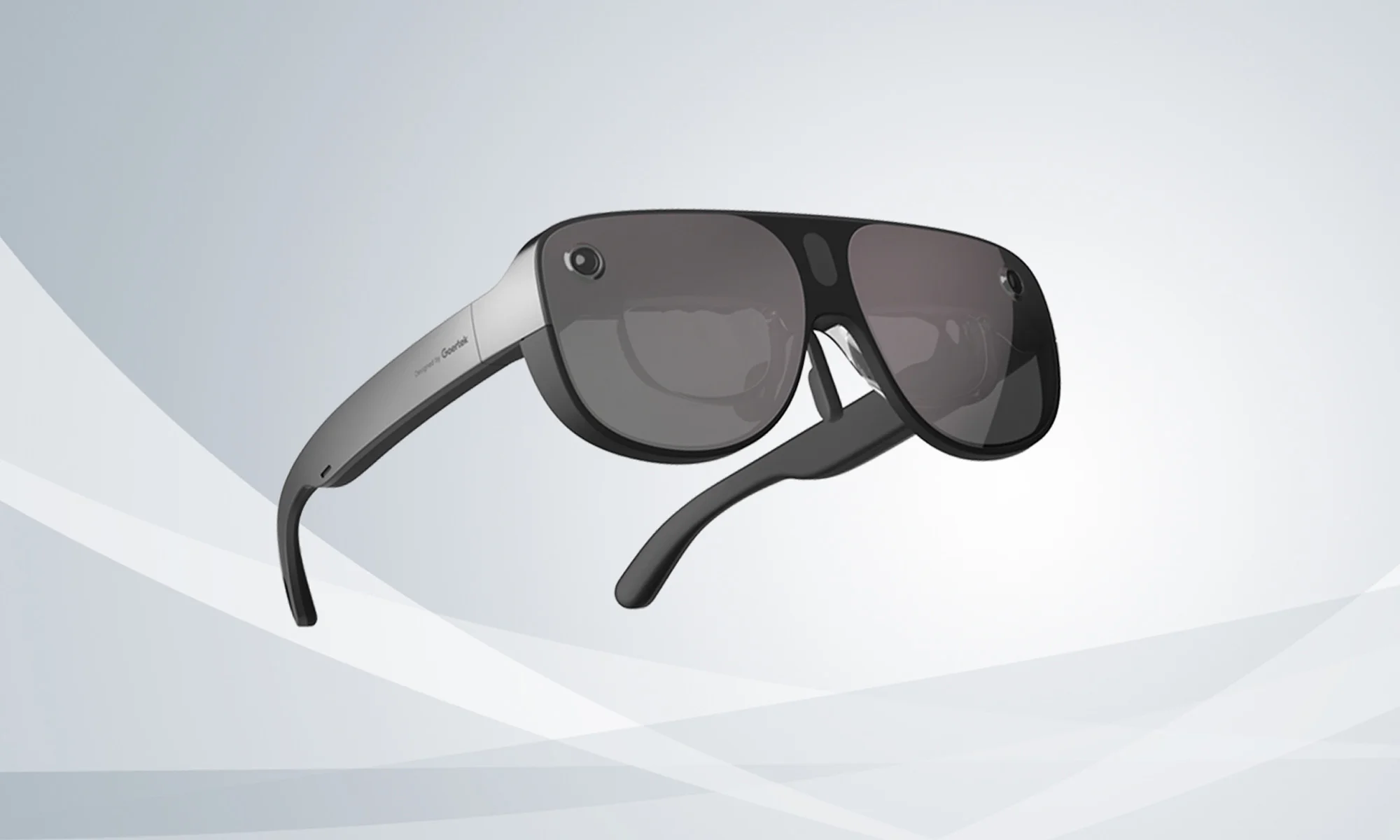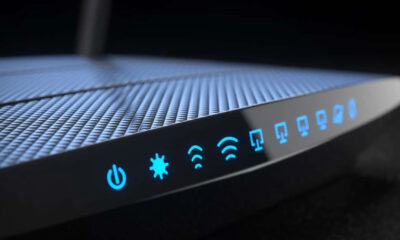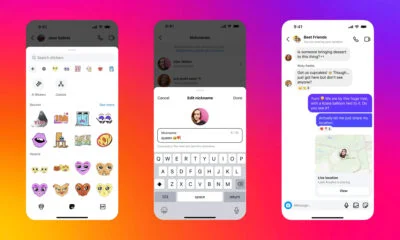News
Wi-Fi 6: Everything You Need To Know
With Wi-Fi 6, you’ll be able to enjoy faster connection speeds, greater capacity, and improved power efficiency.

The speed of the average Wi-Fi connection has increased considerably during the last decade, but our reliance on Wi-Fi grew as well. Today, most people are used to watching high-definition video content on their mobile devices, playing online games without any noticeable lag, and downloading large files without waiting for ages. Last year, the Wi-Fi Alliance, a non-profit organization that promotes Wi-Fi technology and certifies Wi-Fi products, debuted the next-generation standard in Wi-Fi technology (Wi-Fi 6) to satisfy the demands of hyper-connected users, and this article explains everything you need to know about it.
What Is Wi-Fi 6?
Most people who are not tech geeks or don’t work with wireless networks for a living find the names of Wi-Fi standards utterly confusing. The Wi-Fi Alliance had been aware of this issue for quite some time, which is why they decided to come up with a more memorable name for their next Wi-Fi standard.
So why did they choose 6 and not 3 or 10? Because the Wi-Fi Alliance is also retroactively renaming the previous standards to bring some consistency into their naming scheme:
- 11b is now called Wi-Fi 1
- 11a is now called Wi-Fi 2
- 11g is now called Wi-Fi 3
- 11n is now called Wi-Fi 4
- 11ac is now called Wi-Fi 5
- 11ax is now called Wi-Fi 6
That’s right, Wi-Fi 6 is the same standard as 802.11ax, which is how many people in the industry referred to it in the past. Even today, you can still see some writers and vendors using the two terms interchangeably.
What Are The Main Benefits Of Wi-Fi 6?
Okay, we’ve established that Wi-Fi 6 is the next-generation standard in Wi-Fi technology and the successor to 802.11ac, but what are its main benefits? Do we even need a new Wi-Fi standard given that the current one allows us to do just about anything we want?
On its website, the Wi-Fi Alliance mentions the following key benefits:
- Higher data rates: The most commonly supported Wi-Fi standard today, 802.11ac (Wi-Fi 5), offers up to an impressive 6.97 Gbps of bandwidth for 8 streams. Wi-Fi 6 bumps the maximum data rate to 9.607 Gbps thanks to its support for the 1024 quadrature amplitude modulation (QAM) modulation, which essentially allows it to send more information with each transmission.
- Increased capacity: There’s a chance that your current Wi-Fi router supports multi-user MIMO (MU-MIMO), a technology that makes it possible for the router to serve multiple users in parallel. Wi-Fi 6 introduces an improved version of MU-MIMO, enabling routers to not only transmit concurrently to multiple devices but also simultaneously receive information from them.
- Performance in environments with many connected devices: These days, Wi-Fi networks are everywhere, and the number of devices that connect to them is growing at a rapid pace. To improve performance in environments with many connected devices, Wi-Fi 6 is introducing support for spatial frequency reuse. With this technology, it’s possible to differentiate transmissions in their own network from transmissions in neighboring networks.
- Improved power efficiency: Most Wi-Fi devices rely on battery power, and Wi-Fi 6 aims to improve their efficiency by making it possible for them to wake up at other periods than the beacon transmission period. This new feature is called Target Wake Time, and it basically turns your router into a traffic cop.
Overall, Wi-Fi 6 is ready for a world where all kinds of devices — from personal computers to smartphones to smart home products — connect to the internet wirelessly. It offers greater theoretical speeds, increased capacity, and improved power efficiency, among other things.
Do My Devices Support Wi-Fi 6?
Any device purchased before 2019 is unlikely to support Wi-Fi 6 because the Wi-Fi Alliance has been officially certifying devices only since mid-September 2019.
The first smartphone in the world to receive official certification was the Samsung Galaxy Note 10, which was released on August 7, 2019. Other smartphones that support Wi-Fi 6 include the Huawei P40 Pro, iPhone 11, LG V60 ThinQ, OnePlus 8 and 8 Pro, and Samsung Galaxy Fold, just to name a few.
There are currently not many laptops with Wi-Fi 6 support, but you can expect to start seeing them in the near future. Your best options at the moment include the Dell XPS 13 (2020), HP Spectre x360, Lenovo Yoga c940, and LG Gram 17.
Of course, buying a device that supports Wi-Fi 6 won’t provide any benefits unless you also buy a Wi-Fi 6 router. If you have a large budget, then you can go for the Asus ZenWifi AX, a powerful mesh Wi-Fi system, but there are also much less expensive options, such as the TP-Link Archer AX10, a dual-band router with full support.
Also Read: How To Find & Cancel Pending Instagram Requests
Conclusion
The new standard or Wi-Fi is finally here, and there are already quite a few devices that support it. By connecting a device to a router that supports the new standard, you can enjoy faster connection speeds, greater capacity, and improved power efficiency, among other things.
News
Samsung Smart Glasses Teased For January, Software Reveal Imminent
According to Korean sources, the new wearable will launch alongside the Galaxy S25, with the accompanying software platform unveiled this December.

Samsung appears poised to introduce its highly anticipated smart glasses in January 2025, alongside the launch of the Galaxy S25. According to sources in Korea, the company will first reveal the accompanying software platform later this month.
As per a report from Yonhap News, Samsung’s unveiling strategy for the smart glasses echoes its approach with the Galaxy Ring earlier this year. The January showcase won’t constitute a full product launch but will likely feature teaser visuals at the Galaxy S25 event. A more detailed rollout could follow in subsequent months.
Just in: Samsung is set to unveil a prototype of its augmented reality (AR) glasses, currently in development, during the Galaxy S25 Unpacked event early next year, likely in the form of videos or images.
Additionally, prior to revealing the prototype, Samsung plans to introduce…
— Jukanlosreve (@Jukanlosreve) December 3, 2024
The Galaxy Ring, for example, debuted in January via a short presentation during Samsung’s Unpacked event. The full product unveiling came later at MWC in February, and the final release followed in July. Samsung seems to be adopting a similar phased approach with its smart glasses, which are expected to hit the market in the third quarter of 2025.
A Collaborative Software Effort
Samsung’s partnership with Google has played a key role in developing the smart glasses’ software. This collaboration was first announced in February 2023, with the device set to run on an Android-based platform. In July, the companies reiterated their plans to deliver an extended reality (XR) platform by the end of the year. The software specifics for the XR device are expected to be unveiled before the end of December.
Reports suggest that the smart glasses will resemble Ray-Ban Meta smart glasses in functionality. They won’t include a display but will weigh approximately 50 grams, emphasizing a lightweight, user-friendly design.
Feature Set And Compatibility
The glasses are rumored to integrate Google’s Gemini technology, alongside features like gesture recognition and potential payment capabilities. Samsung aims to create a seamless user experience by integrating the glasses with its broader Galaxy ecosystem, starting with the Galaxy S25, slated for release on January 22.


























